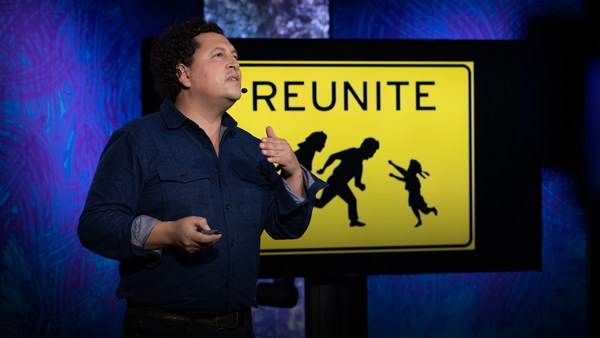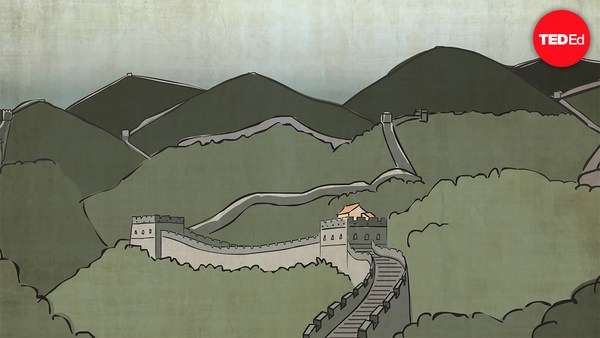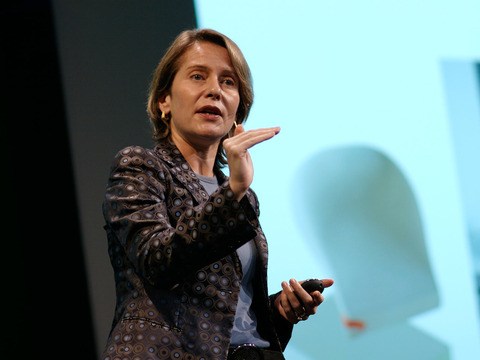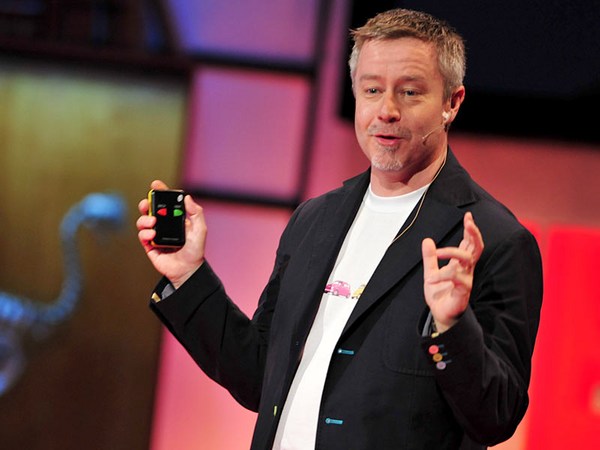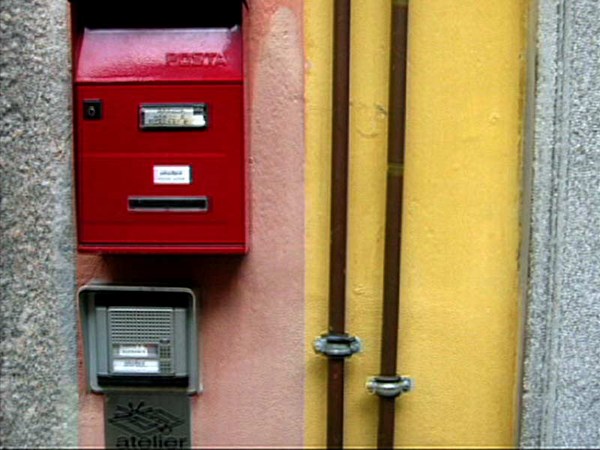Humankind loves to build walls. Have you ever noticed that? We build walls for everything: for shelter, for protection, for privacy. Over the past 70 years, the number of barriers between countries has doubled. Right now, there are more walls than at the end of the Second World War, more than during the Cold War.
Growing up in Germany, the fall of the Berlin Wall always felt to me like the introduction of a new world, a world without barriers. But since the attacks of 9/11, the construction has experienced an extreme rise. Since then, the amount has doubled, with about 30 new structures that were planned or built. Walls and fences are often built with the intention of security, security from another group of people, from crime, from illegal trades. But walls and fences only provide us with a feeling of security, which is different from real security. Even though they might make us feel safe, the structures themselves can't protect us.
Instead, they do something else: they separate. They create an us and a them. They establish an enemy. Walls make us build a second wall in our head, a mental wall. And those mental walls slowly make us lose sight of all the things we have in common with the people on the other side. The other way around, mental walls can grow so strong that they encourage us to build, keep or strengthen physical walls.
Physical and mental walls are closely interlinked, and one almost always comes with the other. It's a constant cycle: physical walls empower mental walls, and mental walls empower physical walls until at one point one part falls away, and the cycle is disrupted.
When the Berlin Wall was being built, it was hard to tell who the wall was facing, because the people living around it identified as one. There was no us and them. There was no others. During the time of separation, both sides developed differently and formed individual identities. All of a sudden, there was an us and a them. A mental wall was built, and when the Berlin Wall fell again in 1989, this mental wall in the head of the people stayed. Eastern Germans had to be reintegrated into their own country, and even though they didn't have to move places, many still today feel like they have never fully arrived. Those remaining effects of the mental wall are also measurable.
A study from the Freie University of Berlin in 2005 shows that even 15 years after the reunification, Germans still believed that cities on the other side of the former wall are further away than they really are. The interesting thing is that they found a link between political attitude and estimation of the distance. The more a participant was against the German reunification, the further away they estimated cities to be. It's the mental wall which keeps cities on the other side far away, and the higher and stronger this mental wall, the more difficult they seem to be reached.
I tried to repeat this study with a group of young Germans who grew up without the wall to see if these effects are still measurable nowadays. And the results show that this generation, my generation, is just kind of bad at geography in general --
(Laughter)
East and West. But in our defense, this could be seen as an improvement, right? We never experienced the actual wall. This physical barrier was never able to make us build a mental wall in the first place.
I would love to take this as a serious indication that there could be a future without a mental wall dividing Germany, but I think we have to face reality: this one wall could be disappearing, but in the meanwhile, a billion others are constructed. One global trend we are currently experiencing is the rise of gated communities. And in a way, gated communities can be seen the same exact way as countries, just on the small scale -- neighborhoods surrounded by walls and fences to protect citizens from other citizens -- and the only difference is, it's by choice. But the physical and mental effects on the people living inside and the people kept outside are the same, separating cities, neighborhoods and even playgrounds.
In the spring of last year, I worked on a design project in Brussels at two elementary schools where this was the case. Both the schools share an entrance and the schoolyard. Both schools teach in Dutch. But one school is mainly visited by Belgian children, and the other school, by immigrant children. The schools are separated by walls and fences, leaving the children no point of interaction other than this fence on the schoolyard that separates them. When I started to work there, it made me sad to see children having to stand at a fence to talk to their friend on the other side. But what's even worse is that most of the children will never get the opportunity to even make a friend on the other side.
School should be the place where children, all children, come together and learn -- learn from the teacher, but more importantly, learn from each other. And the more diversity, the more there is to learn. In fact, school might be the only time in our lives where establishing a contact despite social differences is even possible. Separating children during this time of their development will make integration extremely difficult, if not impossible.
And yet, somehow, I seem to be the only one having a problem with this fence in Brussels. Most of the parents, teachers and children stopped seeing or at least questioning the structure. It's just how it is. Nobody has ever seen it differently. And people are in favor of it. I once asked a boy if he would like to play with the other side, and he said, "No." Then I asked if he would play with them if the fence wasn't there, and he said, "Probably." But then he quickly added that the fence should stay, because the other side is mean and they never give back his ball. It's funny, because I talked to children from both sides, and everyone told me that the other side is mean because they never give back the ball. The children on both sides dislike each other, and there are regularly arguments breaking out at this fence, which is also the main reason why people feel the need for it to be there: it protects the children from each other, or at least their toys, and it prevents chaos. At some point, the children started to crawl beneath the fence to get their ball back, and the reaction of the schools was to put these metal plates there. Now they climb over.
I don't know what came first in Brussels: a mental wall that grew too strong that it made them build a physical fence, or this fence that now emphasizes the social differences, even on the schoolyard. But what I did know when I started to work there was that I wanted to change something about the situation. I wanted to show both sides again how much they have in common. For children, this isn't very hard, because even though one schoolyard speaks Dutch and the other schoolyard, a mix of French, Turkish and Arabic, they all speak the universal language of play. And it turned out the desire to play is a lot stronger than all the supposed differences between them. I installed different games at the fence, which turned it into an interface, a common ground, instead of a barrier. And all of a sudden, children were drawing together, exchanging pencils and talking on the phone. Especially the phones were a great success, because they were so amazed by the fact that they can hear the other side through this device that they couldn't stop speaking.
In the case of an elementary school, parents play a very big role in shaping the everyday life and the environment of their children. So I knew that if I wanted to make a difference, I had to somehow show them, too, how much they have in common with the other side. But for parents, this was a lot more difficult, because most of them speak different languages, work different jobs with different incomes, live in different social circles, believe in different religions, experience different cultures and share different values. And then there was me, a student, different in all of these aspects again. So how could I show them how much they have in common?
I chose not to convince them myself but by letting their own children do the talking. I designed a picture exhibition on the schoolyard showing them their children playing together through the fence. At the end of this exhibition, I asked people to write down their thoughts, ideas and wishes on these big wooden boxes, and I labeled the boxes with, "What do you think?" A lot of people wrote "Yes" on it. Yes, what? I never mentioned my opinion or an action that should follow, so which question were they answering with yes? When I asked, they said yes, the fence should go. Yes, we want to play with the other side. The pictures implied enough to answer a question that was never proposed. People were seeing the absurdity of the situation again and felt how unnecessary this fence is without me forcing an opinion on them. The exhibition showed the two sides their similarities for once. That day, there was no us and them, there was no others. The mental wall started to crumble.
I chose the word "crumbling," because breaking a mental wall is a long journey, and breaking a mental wall can be a lot more difficult than simply tearing down the physical one. We have to challenge our opinion and beliefs and maybe even admit our own wrongs. So what happened in Brussels was a big step, a step that has been taking generations in Germany.
There are many examples from all over the world telling the same story I experienced in Brussels and Germany, enough examples from which we could have learned. But still, we seek walls as solutions for problems that they cannot solve, because walls don't fight the root of our problem. If anything, they reduce the symptoms.
So the next time you are planning to build a wall or you are planning to support someone who wants to build a wall, I want you to remember the impact you are really having. Because, this simple structure will hardly create more security. Instead, it will affect the people living with it every day, people who, despite the geographic border, often share a lot of culture and values. For them, you are not building one wall but two, two walls which will take decades and generations to overcome again.
Thank you.
(Applause)
